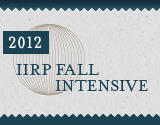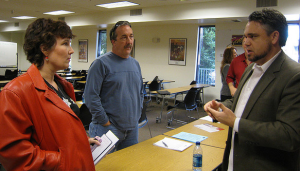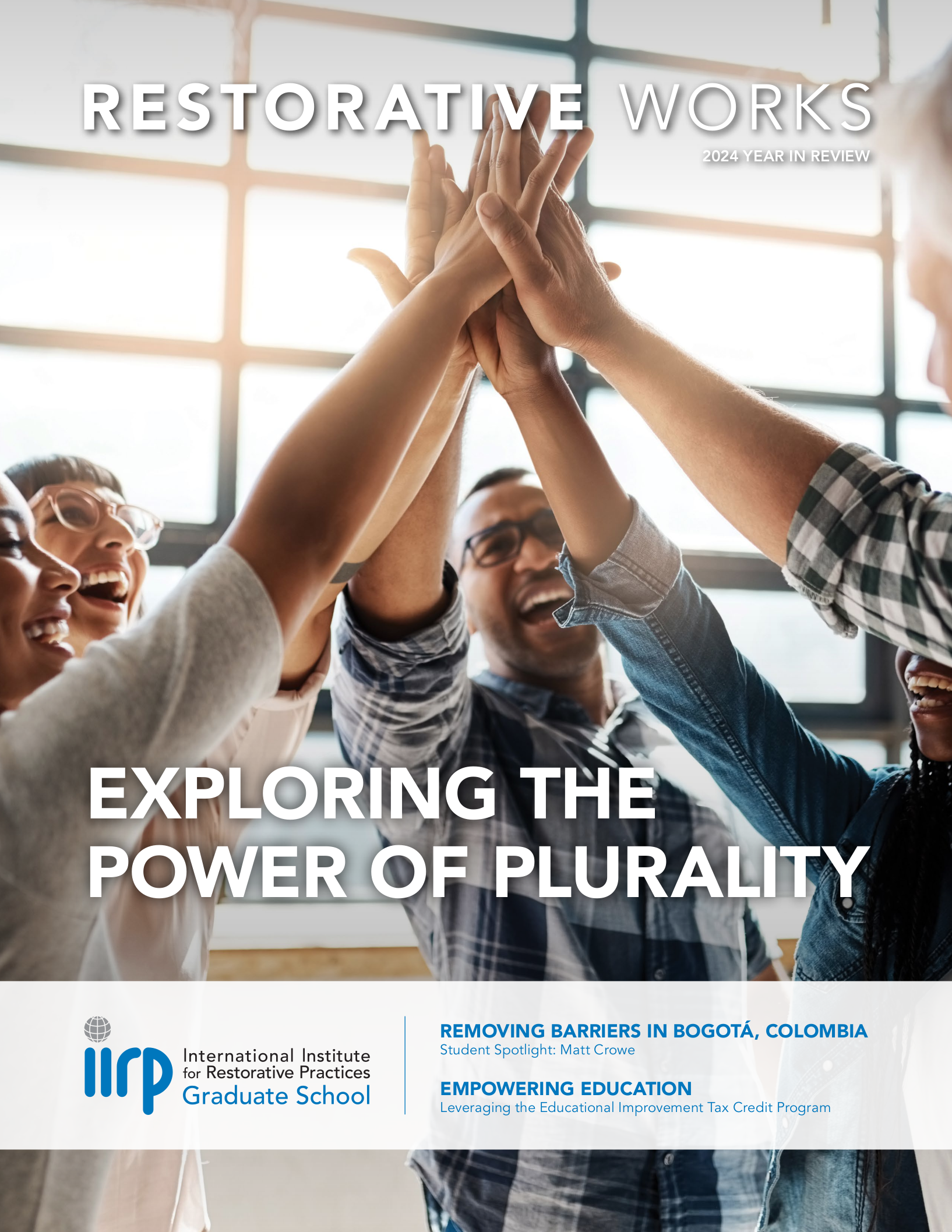News & Announcements
- Details
- Written by Joshua Wachtel
 Mike Licht at FlickrCreativeCommons - Attribution LicenseHere's a fascinating suggestion, that journalists who print inaccurate stories that subsequently have a damaging effect on those they write about should be offered restorative justice first.
Mike Licht at FlickrCreativeCommons - Attribution LicenseHere's a fascinating suggestion, that journalists who print inaccurate stories that subsequently have a damaging effect on those they write about should be offered restorative justice first.
David Brindle, reporting for the Guardian (UK) writes:
Restorative justice schemes have been pioneered in the criminal justice sector, whereby a convicted offender can be forced to meet their victim and be invited to apologise. The idea has spread to conflict resolution in workplaces, schools and the community.
- Details
- Written by Joshua Wachtel
Here's a great little video just put out by San Francisco Unified School District (SFUSD) letting children and teens talk for themselves about their feelings and reactions to the implementation of restorative circles and restorative practices in their schools. The caption under the video on youtube reads:
"SFUSD has rolled out a District-wide implementation of Restorative Practices in dozens of schools. Restorative Practices is based on the assumption that students respond better when things are done WITH them rather than TO them. Students exposed to Restorative Practices reflect on how they feel regarding the use of Restorative Circle in the classroom."
- Details
- Written by Joshua Wachtel
 The Fall Intensive is a rare opportunity to explore the full potential of restorative practices: a powerful four-day experience that will immerse you in the restorative culture of CSF Buxmont schools for delinquent and at-risk youth (IIRP demonstration programs), followed by two days of core restorative practices professional development. After two days of firsthand involvement in the restorative environment of a CSF Buxmont school, you can immediately deepen your understanding by learning about what you’ve just experienced.
The Fall Intensive is a rare opportunity to explore the full potential of restorative practices: a powerful four-day experience that will immerse you in the restorative culture of CSF Buxmont schools for delinquent and at-risk youth (IIRP demonstration programs), followed by two days of core restorative practices professional development. After two days of firsthand involvement in the restorative environment of a CSF Buxmont school, you can immediately deepen your understanding by learning about what you’ve just experienced.
- Details
- Written by Joshua Wachtel
Interdisciplinary Conference
This interdisciplinary conference will provide an international perspective on restorative practices theory and practice in a variety of settings, including education, social welfare, criminal justice, community development and workplaces. Restorative practitioners from around the world will share their knowledge and achievements and find encouragement, support and advice.
- Details
- Written by Joshua Wachtel
From the Denver Post:
 As Sharletta Evans prepared for her face-to-face meeting with the man who killed her son, she couldn't escape one uncomfortable but gnawing need — to touch his hands.
As Sharletta Evans prepared for her face-to-face meeting with the man who killed her son, she couldn't escape one uncomfortable but gnawing need — to touch his hands.
"The harm he caused me was through his hands," said Evans, whose 3-year-old son, Casson, was slain in a 1995 drive-by shooting. "The fact that he actually pulled the trigger, it was something about the hands that kept coming to me."
But when the opportunity arose May 23, Evans hesitated, uncertain whether she could follow through with her request of Raymond Johnson, the man serving life without parole for the murder.
There was so much else Evans needed from Johnson, and it had been so long. He was 16 at the time of his crime, but he now stood a month shy of his 33rd birthday. She had spent the years grieving and adapting to the loss of Casson before realizing she had gone as far as she could on her own.
- Details
- Written by Joshua Wachtel
This piece, titled "Restorative practices at home: A method used in some schools seems a useful tool in mommy’s toolbox," by Aimee Lewis Strain appeared July 3, 2012 in the San Carlos Patch. Strain began wondering about restorative practices when she read an article about its application in San Francisco schools. Here, in this creative column, she talks about how she attempted to resolve a conflict with her 7-year-old son not with a conventional punishment but rather with a conversation modeled on what she'd been reading. Strain gave us permission to re-post the entire piece here on the Restorative Practices Blog.
- Details
- Written by Joshua Wachtel
Here's the text of IIRP President Ted Wachtel's latest blog at Huffington Post.
 The bullying by middle school students of Karen Klein, a school bus monitor in upstate New York, captured on video and viewed by millions online, sends a distressing message about the state of civility in our society.
The bullying by middle school students of Karen Klein, a school bus monitor in upstate New York, captured on video and viewed by millions online, sends a distressing message about the state of civility in our society.
Since the video of the incident "went viral," news reports say that Ms. Klein has received an outpouring of support, including contributions of hundreds of thousands of dollars to send her on a "dream vacation." At the other end of the spectrum, the boys and their families have reportedly received death threats. In response, some of the boys and their parents issued letters of apology to Ms. Klein.
Our hearts go out to the poor abused woman, and we decry the boys' atrocious behavior. This deplorable incident, however, presents an ideal opportunity for learning and healing. A much more complete and meaningful resolution for all parties could be achieved by means of a process known as a "restorative conference." A structured meeting run by a trained facilitator, the conference would bring together everyone affected by the incident: Ms. Klein, her friends and family, the boys, their family members, other children who witnessed the incident, to talk about what happened, how everyone has been affected and how to repair the harm.
- Details
- Written by Joshua Wachtel
 photo by Dru Bloomfield / Flickr Creative CommonsThe Harvard Business Review in its June 2012 issue published an article called "Leadership Is a Conversation" by Boris Groysberg and Michael Slind. They start by saying the old "command-and-control" model of business administration has given way to other models.
photo by Dru Bloomfield / Flickr Creative CommonsThe Harvard Business Review in its June 2012 issue published an article called "Leadership Is a Conversation" by Boris Groysberg and Michael Slind. They start by saying the old "command-and-control" model of business administration has given way to other models.
They write:
"Smart leaders today, we have found, engage with employees in a way that resembles an ordinary person-to-person conversation more than it does a series of commands from on high. Furthermore, they initiate practices and foster cultural norms that instill a conversational sensibility throughout their organizations. Chief among the benefits of this approach is that it allows a large or growing company to function like a small one. By talking with employees, rather than simply issuing orders, leaders can retain or recapture some of the qualities—operational flexibility, high levels of employee engagement, tight strategic alignment—that enable start-ups to outperform better-established rivals."
- Details
- Written by Joshua Wachtel
Henry's Story - Facing the Music
 Photo from RJC
Photo from RJC
As I waited for Rachel to arrive I was absolutely terrified. I knew what would happen but it was terrifying doing it – actually facing her. She was the one I stole from. It went right to my guts. I knew then that this just wasn’t me – I had to change. I think back on that day and it gives me the attitude that I need to never go back to how I was before.
At 14 I moved schools and it was soon after that when a friendpressured me into trying ketamin for the first time. It became my addiction. I left school with 1 GCSE. I left my family to live with a friend in a caravan. I thought I was alright because I was next to my drugs, I could get them easily and that was what I cared about.
- Details
- Written by Joshua Wachtel
 Martin Wright Speaking at the European Forum Conference for Restorative Justice Upon Receiving the AwardThe Restorative Justice Council reports (note the link below for a free download of Wright's "Toward a Restorative Society"):
Martin Wright Speaking at the European Forum Conference for Restorative Justice Upon Receiving the AwardThe Restorative Justice Council reports (note the link below for a free download of Wright's "Toward a Restorative Society"):
In recognition of his outstanding contribution to restorative justice, Martin Wright, was presented the European Restorative Justice Award by the European Forum for Restorative Justice.
Dr Wright is a founding member of the Restorative Justice Council, seminal restorative justice author and practicing restorative justice facilitator.
A leading penal reformer in the UK Martin Wright is a former Director of the Howard League for Penal Reform and Policy Officer at Victim Support. His academic titles include Librarian of the Cambridge Institute of Criminology, Senior Research Fellow, De Montfort University, Leceister and Honorary Fellow of the Institute for Conflict Resolution, Bulgaria.

Restorative Works Year in Review 2024 (PDF)
All our donors are acknowledged annually in Restorative Works.

